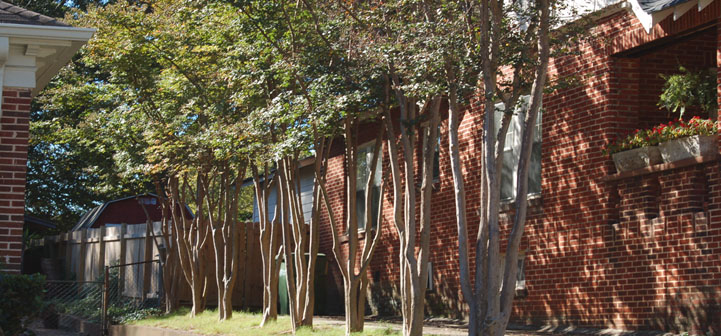Reviewed and Revised on 10/17/20
Vines, shrubs, and some trees can be used as espaliers (plants trained to grow flat against walls) can be used to protect home walls from heat and cold. The plant foliage provides a sort of insulation against summer heat and cold winter winds. It can also help to reduce noise. Vines like English ivy are not recommended because they cling to masonry and wooden surfaces and can damage your house. Vines that twine and that will cling to a trellis placed near the house are generally a better choice since they don’t damage the structure. The trellis also allows for an air space of cooler air. Leaving an air space next to the house by planting vines on a trellis is especially important in humid climates to prevent moisture buildup. Fast growing vines such as morning glory or moon vine can provide needed summer shade.
Arbors, slatted wooden structures, and awnings can be effective on the east and west sides of the house. Arbors with deciduous vines growing on them provide additional shade over an outside area while blocking the sun’s rays from hitting sections of the house. In the winter months the leaves will drop off the plants and more light and warmth will reach the house.
Adapted from: Landscaping for Energy Conservation by William C. Welch, Extension Landscape Horticulturist, Texas Agricultural Extension Service. Accessed October 14, 2009
This article was reviewed by Gail Hansen, Environmental Horticulture Department, University of Florida
